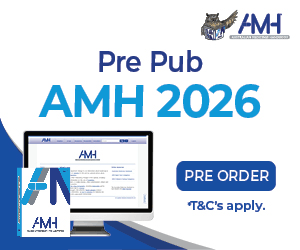The global COVID-19 pandemic seized the world’s attention and catapulted healthcare into the spotlight. In many countries, the healthcare workforce was exposed to unprecedented pressure and complexity as they grappled with the exponential increase in COVID-19 cases.
Continuity of teaching and learning for undergraduate students was a priority for Deakin University’s School of Nursing and Midwifery when the pandemic was emerging in Australia to ensure the sustainability of Australia’s future nursing and midwifery workforce.
A study from the UK highlighted feelings of pressure, fear and anxiety in students on entering the clinical environment (Swift et al. 2020).
To ensure students were prepared and felt supported for clinical placement, participating in facilitated simulation prior to placement was an important consideration.
University on campus teaching and learning activities rapidly moved online in week two of Trimester 1. The School sought an exemption from the Vice-Chancellor, Professor Iain Martin, to continue on campus face-to-face simulation.
Unlike the vast majority of Victorian universities, Deakin’s School of Nursing and Midwifery continued to facilitate simulations.
The simulations were conducted consistent with social distancing guidelines as stipulated by the Australian Government, Department of Health (Australian Government, Department of Health 2020).
Social distancing requirements were communicated to students and staff using videos, online posts and individual emails. A student-focused video demonstrated the movement of students through the simulation environment, and a facilitator-focused video covered the crucial and unique considerations for student learning. Environmental factors included removing any unnecessary equipment and objects that could not be cleaned with alcohol such as all linen, manikin/human simulator gowns/clothing and curtains. Social distancing posters and key signage were used throughout the simulation centre to support student and facilitator movements.
Safety of students and staff was paramount. Students were instructed not to attend campus if they had any COVID-19 symptoms, in addition, all students were required to complete a COVID-19 screening form based on the Victorian Department of Health and Human Services guidelines (Department of Health and Human Services, State Government of Victoria 2020). These were updated regularly as the guidelines changed.
Before attending simulations, students were instructed to wear their uniform and only to bring minimal personal items such as keys or a small bag. On the day of the session, staff directed the movement of students through the simulation centre ensuring social distancing was maintained.
One student entered the simulation room at a time, stored personal belongings, performed hand hygiene, donned gown, mask and gloves and made their way to the furthermost bed from the door. Once the student was at the bed standing on the pre-determined floor marker, the next student entered the room. On completion students cleaned any equipment they used with alcohol wipes, emptied rubbish and tidied up the space, under the supervision of the facilitator. Students were instructed to leave the simulation room one at a time, starting from the bed closest to the door, doffing personal protective equipment, performing hand hygiene and collecting their personal belongings. Timing of the sessions was staggered to ensure cross over of students was minimised. Over 3,200 students participated in face-to-face simulations across Deakin’s three campuses, Burwood, Geelong and Warrnambool.
References
Australian Government Department of Health. 2020, 13 May). Physical distancing for coronavirus (COVID-19). Retrieved from www.health.gov.au/news/health-alerts/novel-coronavirus-2019-ncov-health-alert/how-to-protect-yourself-and-others-from-coronavirus-covid-19/physical-distancing-for-coronavirus-covid-19
Department of Health and Human Services, State Government of Victoria. 2020. Getting tested for coronavirus (COVID-19). Retrieved from www.dhhs.vic.gov.au/getting-tested-coronavirus-covid-19#what-are-the-symptoms-of-coronavirus-covid-19
Swift, A., Banks, L., Baleswaran, A., Cooke, N., Little, C., McGrath, L., Meechan‐Rogers, R., Neve, A., Rees, H., Tomlinson, A. and Williams, G. 2020. COVID‐19 and student nurses: A view from England. J Clin Nurs. doi:10.1111/jocn.15298
AUTHORS
Dr Jo McDonall, RN, PhD is Senior Lecturer, is Director of Undergraduate Studies, School of Nursing and Midwifery, Centre for Quality and Patient Safety Research, at the Faculty of Health, Deakin University, Geelong, Victoria
Associate Professor Lauren McTier, RN, PhD is Associate is Head of School (Teaching and Learning), at the School of Nursing and Midwifery, Centre for Quality and Patient Safety Research, Faculty of Health, Deakin University, Geelong, Victoria
Professor Nicole M (Nikki) Phillips, RN, PhD is Head of School of Nursing and Midwifery at the Centre for Quality and Patient Safety Research, Faculty of Health, Deakin University, Victoria








